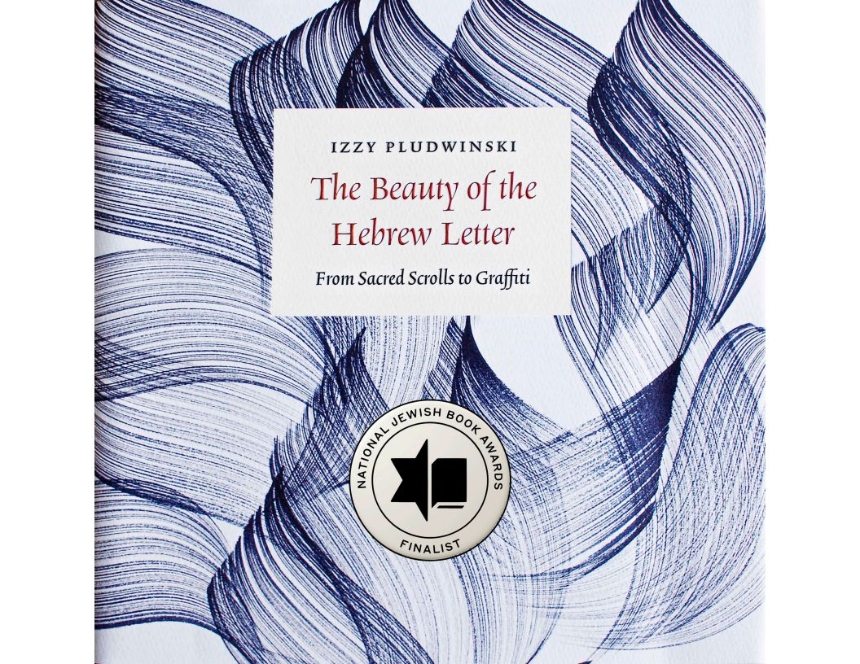9781684581467
Distributed for Brandeis University Press
The Beauty of the Hebrew Letter
From Sacred Scrolls to Graffiti
A celebration of the beauty of the Hebrew aleph-bet from sacred scrolls to graffiti.
The Beauty of the Hebrew Letter is unique: there are many art books on Chinese lettering, Roman lettering, and so on, but this is one of just a few books on the Hebrew letter, and what a beautiful book it is. Calligrapher and scribe Izzy Pludwinski is in love with letters, and this love shines through in this extraordinary, groundbreaking book. Here you will find examples of Hebrew writing and design from Biblical times to the present day that showcase the art of lettering as well as the beauty inherent in the forms themselves. Only one who deeply understands the formation and meaning of these characters could assemble a book of such depth, breadth, and beauty. Though firmly entrenched in the world of traditional Judaica, Pludwinski’s calligraphic passion lies in finding ever-new expressive forms for the Hebrew aleph-bet—a path that has led him to anywhere from font development to Zen-influenced abstract Hebrew calligraphy, from sacred scrolls to graffiti.
Why Beauty?
Beauty is not just a static presentation of form. Calligraphy is like dance—the strokes that form the letters are the embodied gestures of the moving hand and body. One senses the vitality in the movements that underlie these forms. They make the letters come alive, and it is this lifeforce that resonates with the viewer.
Why Hebrew?
In the Midrashic tradition, the Hebrew letter is not simply an arbitrary symbol meant to express a certain sound. There is meaning in the shapes themselves. One develops a relationship with each of the letters. When one writes them, one respects their individuality, on the one hand, and their sense of community, on the other. They belong together. One way to show this respect is to write them as beautifully as possible, to enliven them, to make them shine.
With more than 200 illustrations that span the history of the Hebrew aleph-bet over three millennia, this book will engage, delight, and surprise.
The Beauty of the Hebrew Letter is unique: there are many art books on Chinese lettering, Roman lettering, and so on, but this is one of just a few books on the Hebrew letter, and what a beautiful book it is. Calligrapher and scribe Izzy Pludwinski is in love with letters, and this love shines through in this extraordinary, groundbreaking book. Here you will find examples of Hebrew writing and design from Biblical times to the present day that showcase the art of lettering as well as the beauty inherent in the forms themselves. Only one who deeply understands the formation and meaning of these characters could assemble a book of such depth, breadth, and beauty. Though firmly entrenched in the world of traditional Judaica, Pludwinski’s calligraphic passion lies in finding ever-new expressive forms for the Hebrew aleph-bet—a path that has led him to anywhere from font development to Zen-influenced abstract Hebrew calligraphy, from sacred scrolls to graffiti.
Why Beauty?
Beauty is not just a static presentation of form. Calligraphy is like dance—the strokes that form the letters are the embodied gestures of the moving hand and body. One senses the vitality in the movements that underlie these forms. They make the letters come alive, and it is this lifeforce that resonates with the viewer.
Why Hebrew?
In the Midrashic tradition, the Hebrew letter is not simply an arbitrary symbol meant to express a certain sound. There is meaning in the shapes themselves. One develops a relationship with each of the letters. When one writes them, one respects their individuality, on the one hand, and their sense of community, on the other. They belong together. One way to show this respect is to write them as beautifully as possible, to enliven them, to make them shine.
With more than 200 illustrations that span the history of the Hebrew aleph-bet over three millennia, this book will engage, delight, and surprise.

240 pages | 218 color plates | 10 x 10 | © 2023
Art: Art--General Studies, Middle Eastern, African, and Asian Art

